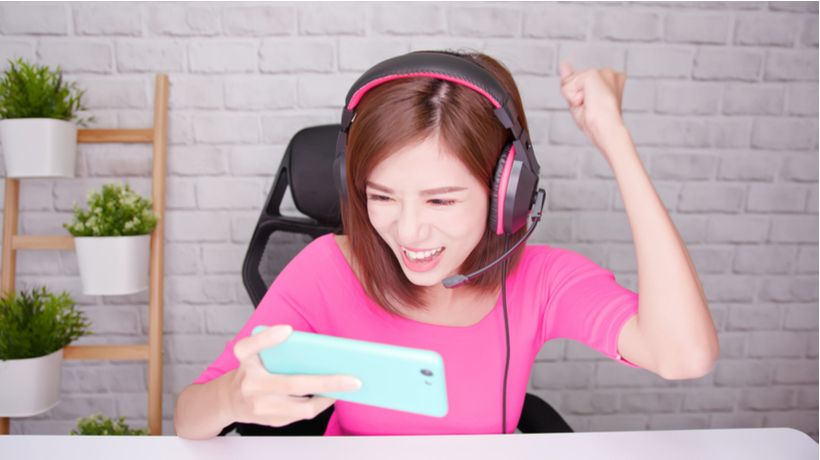The Benefits Of Game-Based Learning And Integrating Adult Learning Styles
Game-based learning is the idea of taking a game format, like quests, rewards, badges, and working until success is achieved, and applying them to non-game contents, like classroom learning or office tasks. This idea works to make learning more appealing and provide motivation and excitement. Taking game-based learning a step further means using it in tandem with the 3 adult learning styles; auditory, visual, and kinesthetic. By bringing the application of game-based learning and adult learning styles together, each individual will be offered their ideal learning environment, which will motivate everyone to complete the tasks, learn the material, and retain it for the future.
What Is Game-Based Learning?
Game-based learning is the adaptation of gaming elements and game mechanics to non-game contexts, like the classroom or work environment. Game-based learning creates structure and a reward system, presenting materials in a new and exciting way. This system can make learning or completing tasks more appealing, and can increase productivity as well as information recall and retention. By adding game elements there is an increased incentive to learn or perform tasks, which makes them easier to approach, work through, and complete.
Game-Based Learning Examples
1. In The Workplace.
An example of game-based learning in the workplace is using a popular theme to work through tasks. One office was into local baseball and used a baseball theme to approach having to call clients. Each employee had a certain number of days to complete the task they were given, like innings in a baseball game, and once the task was complete they scored a point, or run. This format motivated employees to complete their tasks and they were further encouraged by daily emails updating the office on everyone’s progress. This example shows how friendly competition can be added to a seemingly mundane task and can work as motivation without anyone feeling forced into the game.
2. Apps (Mobile Applications).
Apps are a great way to use game based learning and game mechanics to make tasks more fun. A very popular example is the Fitbit. Fitbit is a fitness tracker and app that displays daily progress in multiple fitness areas. The tracker bracelet monitors steps, active minutes, and heart rate, with the app displaying information visually in graph form. The app also allows users to connect with friends and compete in weekly challenges. As users check in daily with the app, badges can be earned for steps taken, stairs climbed, and for winning challenges. This system takes the task of exercise or fitness and applies gaming principles to make the tasks more appealing.
3. Other Examples Of Game-Based Learning.
- Physical achievement badges for completing tasks.
- A leader or progress board: Either physical or as a daily email.
- Visual displays of tasks to complete, progress made, and rewards.
Adult Learning Styles
When it comes to learning styles, most individuals can obtain and process information in almost any way, but all have a preferred way that works best for them.
There are 3 main learning styles:
- Visual.
- Auditory.
- Kinesthetic.
Each learning style is about how information is taken in, and those that prefer to learn in that style may have difficulty retaining information presented in a less preferable manner.
Visual Learners (Learn By Seeing And Visualizing).
- Prefer information be delivered visually. Using graphic organizers to improve performance.
- Learn best from maps, graphs, charts, infographics, and diagrams.
Auditory Learners (Learn By Listening And Verbalizing).
- Prefer to learn by listening. Need to hear what is being said for understanding.
- Learn best from lectures, discussions, and reading aloud.
Kinesthetic Learners (Learn By Doing And Solving Real-Life Problems).
- Also called tactile learners.
- Prefer to experience the information.
- Learn best by touching, feeling, or experiencing the information or topic being discussed.
- By writing and physically manipulating the information they are more likely to recall and retain the information.
Adult Learners
Adult learners are different from children because they have life experiences they draw from and make decisions on what’s important and how to apply information. This is different from children who are more of a blank slate and learn how to apply the information they’re receiving. This needs to be taken into consideration when teaching or working with adults because they will take the information they’re given and apply it how they see fit, not how they’re told it should be applied or used.
Benefits Of Learning With Games
The main benefit of using game-based learning on non-game content is that you can customize the learning experience, instead of following one traditional path. Since most individuals have a preferred way of processing information, one of the three learning styles, using game based learning can merge the content and the learning style.
Game-based learning also changes the motivation from finishing a task to participating in the game. Some individuals are not grade or complete the project oriented; some may approach tasks from a reward standpoint or how the task affects the larger picture. Using game based learning in tandem with learning styles will help more individual’s complete tasks, retain information, and apply what they’ve learned to future projects and tasks as well as their lives outside of the classroom or workspace.
Examples Of Bringing Game-Based Learning And Adult Learning Styles Together
Visual Learners
- A physical representation of the tasks that need to be completed.
- A list or infographic.
- A physical representation of tasks as they’re completed and progress is made.
- A checklist or a graph that’s colored in as items are finished.
Auditory Learners
- Tasks are explained out loud and in a handout or email form.
- A briefing of the tasks to complete.
- As tasks are completed there’s a briefing about what’s been completed and what tasks remain.
- A weekly meeting to summarize progress.
- Reminders of task progress are presented daily with a notification either through email, calendar, and physically.
Kinesthetic Learners
- A physical representation of the tasks that need to be completed and a timeline.
- An inbox/outbox format for moving tasks through the timeline, like progress in a quest.
- Seeing firsthand what the tasks will impact beyond the classroom or office.
- Meeting with people or the location the tasks affect.
- Progress is displayed visually with the ability to manipulate the progress marker.
- A display with a moveable marker.
Hopefully this explanation gives you a better idea of the benefits of game-based learning and how important supporting adult learning styles are in educational settings. We all learn differently. We all thrive differently. So, let’s do our best to acknowledge this in every aspect of our teaching.
Share the knowledge, and inspire others. Share on your social media platforms or contact me directly through @TRavenMeyers or [email protected] with questions or suggestions for further information in education technology and design.









